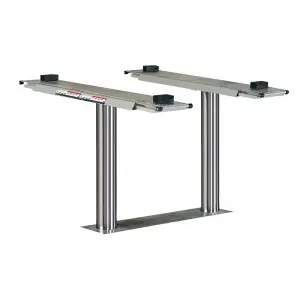****
In electrical engineering, AC series circuits play a crucial role in the functioning of various devices and systems that operate using alternating current. Understanding how AC series circuits work, their characteristics, and their applications helps engineers and technicians design more efficient systems and troubleshoot a myriad of electrical issues. This article delves into the intricacies of AC series circuits, focusing on their primary components, behavior under different conditions, and their significance in today’s technological landscape.
The Basics of AC Series Circuits
An alternating current (AC) series circuit consists of components like resistors, inductors, and capacitors connected in a single path, meaning the same current flows through each of these elements. The voltage in an AC series circuit varies sinusoidally with time, which differentiates it from direct current (DC) circuits where the current and voltage remain constant. The frequency of this sinusoidal wave is measured in hertz (Hz), with standard frequencies being 50Hz in many parts of the world and 60Hz in others.
Key Components of AC Series Circuits
1. **Resistors**: These components oppose the flow of electric current and dissipate energy as heat. In AC series circuits, resistors affect the phase and amplitude of the current but do not cause any significant phase shifts. Therefore, the voltage across the resistor and the current through it are in phase.
2. **Inductors**: Inductors store energy in a magnetic field when current flows through them. In AC circuits, inductors create a phase shift where the current lags the voltage by 90 degrees. This means that the peak voltage occurs before the peak current, which is a critical aspect of their behavior in series circuits.
3. **Capacitors**: These components store energy in an electric field and allow current to lead the voltage by 90 degrees in AC circuits. In a series circuit, the interaction between the capacitive and inductive reactance determines the total impedance, which can significantly influence the overall performance of the circuit.
Impedance in AC Series Circuits
One of the core concepts in AC circuit analysis is impedance, which is the total opposition that a circuit offers to the flow of alternating current. It is represented as a complex quantity comprising both resistance (R) and reactance (X). The total impedance (Z) in an AC series circuit is calculated using the following formula:
\[ Z = \sqrt{R^2 + (X_L – X_C)^2} \]
Where \( X_L \) is the inductive reactance, which can be computed using the formula \( X_L = 2\pi f L \), and \( X_C \) is the capacitive reactance, expressed as \( X_C = \frac{1}{2\pi f C} \). The phase angle (\( \phi \)) in the circuit is also an essential aspect, represented by:
\[ \tan(\phi) = \frac{X_L – X_C}{R} \]
Resonance in AC Series Circuits
Another critical phenomenon in AC series circuits is resonance, which occurs when the inductive reactance equals the capacitive reactance (\( X_L = X_C \)). At the resonance frequency, the circuit absorbs maximum power due to minimal total impedance. This property is widely exploited in applications such as tuning radios, where the goal is to select a specific frequency from a range of signals.

Understanding AC Series: An In-Depth Exploration of Alternating Current Series Circuits and Their Applications in Modern Electrical Systems

Understanding AC Series: An In-Depth Exploration of Alternating Current Series Circuits and Their Applications in Modern Electrical Systems
Applications of AC Series Circuits
AC series circuits have numerous applications in modern electrical systems, including but not limited to:
– **Power Distribution**: They are fundamental in power transmission lines where transformers and distribution networks utilize AC series configurations to optimize energy transfer.
– **Filtering**: In audio systems, AC series circuits are used in filters that separate different frequency components, allowing for sound clarity and quality.
– **Oscillators**: AC series circuits form the basis of various oscillator designs, which are critical in generating signals for clocks, radios, and other electronic devices.

Understanding AC Series: An In-Depth Exploration of Alternating Current Series Circuits and Their Applications in Modern Electrical Systems
– **Motor Control**: Many electric motors utilize series circuits for speed control, where the phase relationships between voltage and current dictate performance and efficiency.
Conclusion
AC series circuits are integral to electrical engineering and play an essential role in various applications that power our modern society. Understanding their functioning, impedance characteristics, and behavior at resonance not only enhances our comprehension but also allows for the advancement of technologies that rely heavily on alternating current systems. As the demand for efficient and reliable electrical solutions continues to grow, so will the importance of AC series circuits in addressing these challenges. Through ongoing research and innovation, the evolution of AC series circuits will significantly impact the design and functionality of future electrical systems.New Engery Vehicle Battery Lift
